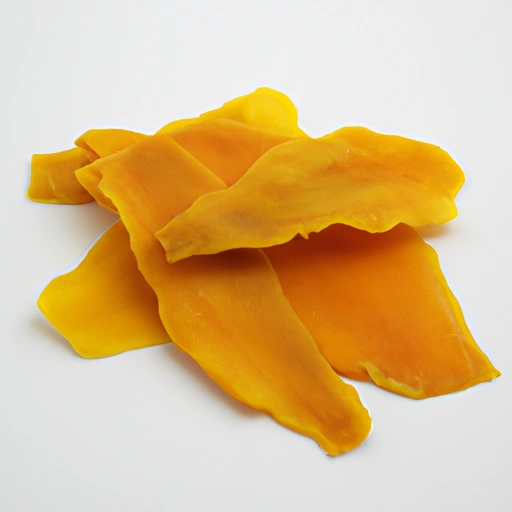Dried Mango
Description

Dried mango is a dehydrated form of the ripe fruit of the mango tree, known scientifically as Mangifera indica. This preservation process involves removing the majority of the water content from the mango slices, resulting in a chewy, sweeter, and longer-lasting treat. Dried mango is enjoyed worldwide and is used in a variety of culinary applications, from snacks to desserts to exotic dishes. It can be found pre-packaged in various sizes, ranging from small snack packs to larger bulk quantities.
Common uses
Dried mango is commonly used as a snack, a sweet addition to breakfast cereals, and as a flavorful component in trail mixes. It is also a popular ingredient in baking, various sweets, and savory dishes.
Nutritional value
Calories
A 1-ounce serving (approximately 28 grams or 1 ounce) of dried mango typically contains around 100 calories.
Protein
Dried mango contains about 1 gram of protein per serving.
Fat
This fruit is naturally low in fat, with less than 1 gram per serving.
Carbohydrates
Carbohydrates are abundant in dried mango, with a serving providing about 25 grams, mostly in the form of sugars.
Vitamins
Dried mango is a rich source of vitamins, particularly vitamin A and vitamin C.
Minerals
It also contains essential minerals such as calcium and iron.
Health benefits
Dried mango, being rich in dietary fiber, aids in digestion and promotes a healthy gut. The high levels of vitamin A contribute to good vision and skin health, while vitamin C boosts the immune system. Antioxidants present in dried mango help combat oxidative stress.
Potential risks
Due to its high sugar content, dried mango should be consumed in moderation. Overconsumption can lead to increased calorie intake and may affect blood sugar levels. Individuals with allergies to mango should avoid this product.
Common recipes
Dried mango can be used in a variety of recipes, from mango chutneys and salsas to sweet confections like mango bars and cakes. It is also a delightful addition to grain salads and curry dishes.
Cooking methods
Dried mango doesn't typically require cooking, but it can be rehydrated if needed. Simply soak in warm water or add directly to dishes where it will absorb moisture during the cooking process.
Pairing with other ingredients
It pairs well with coconut, nuts, yogurt, and grains such as rice and quinoa. Dried mango also complements spices like cinnamon, nutmeg, and cardamom.
Summary
Dried mango is a versatile and nutritious ingredient that adds a touch of sweetness to various dishes. It is rich in vitamins and minerals and offers health benefits when consumed as part of a balanced diet. With its chewy texture and concentrated flavor, dried mango is a favorite in kitchens across the globe, from Asia to the Americas to Europe.